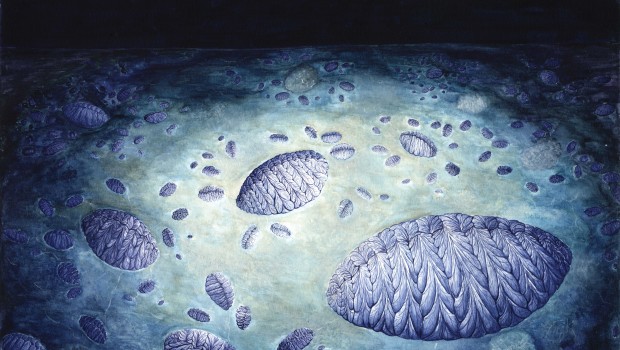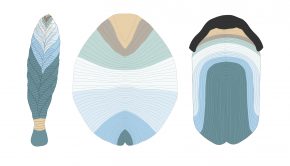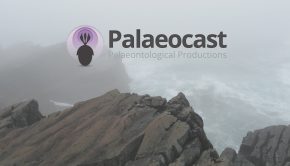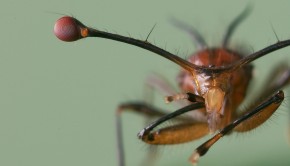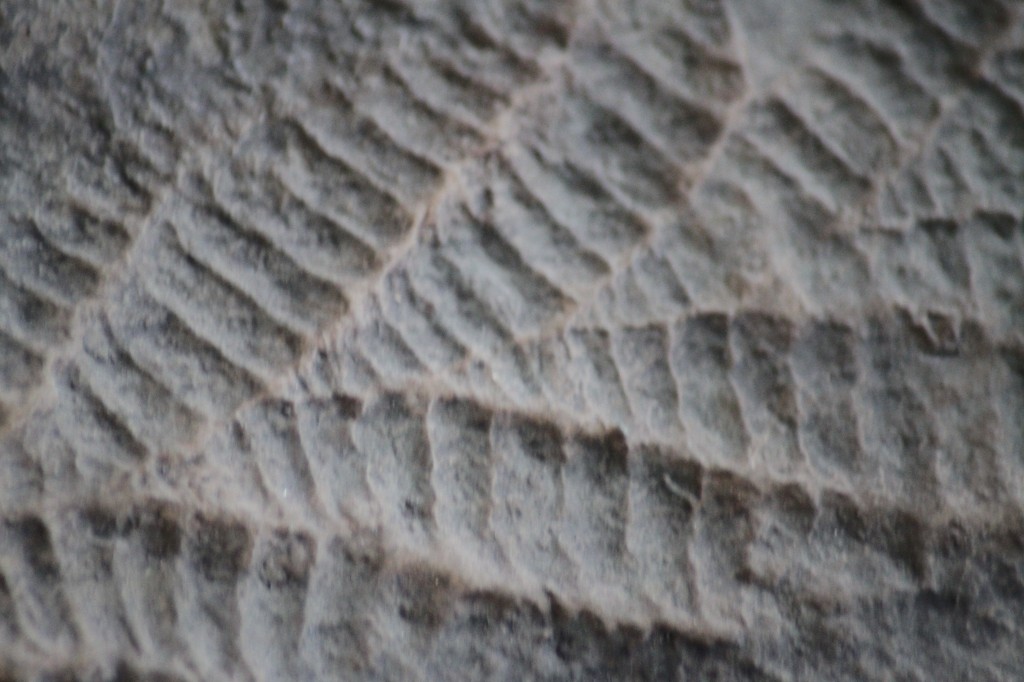Episode 50: Rangeomorph Reproduction
On today’s episode we’re revisiting Mistaken Point, Newfoundland, Canada. At this lagerstätte it is possible to find large bedding planes full of Precambrian organisms called rangeomorphs. These are an enigmatic group, which still can’t be placed on the ‘tree of life’.
We are joined by Dr Emily Mitchell of the University of Cambridge, who’s recent paper in Nature was able to show that you don’t need to be able to fully understand the anatomy of an organism to discern some of its most intricate details.
Podcast: Download (Duration: 39:50 — 54.7MB)
Mistaken Point is located on the South-Easterly most point of Newfoundland, Canada.

Here, the exposed fossil-bearing bedding surfaces dip gently into the Ocean. Image credit: Alex Liu.
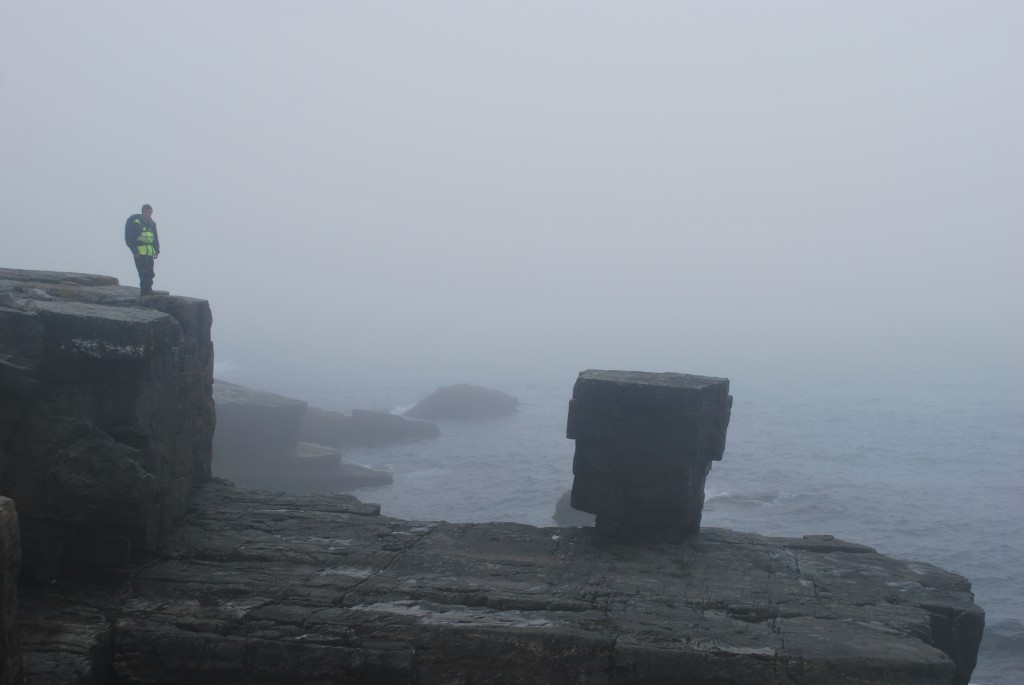
Positioned in the Atlantic Ocean, the most common weather encountered over the course of the year is fog. Image credit: Alex Liu.
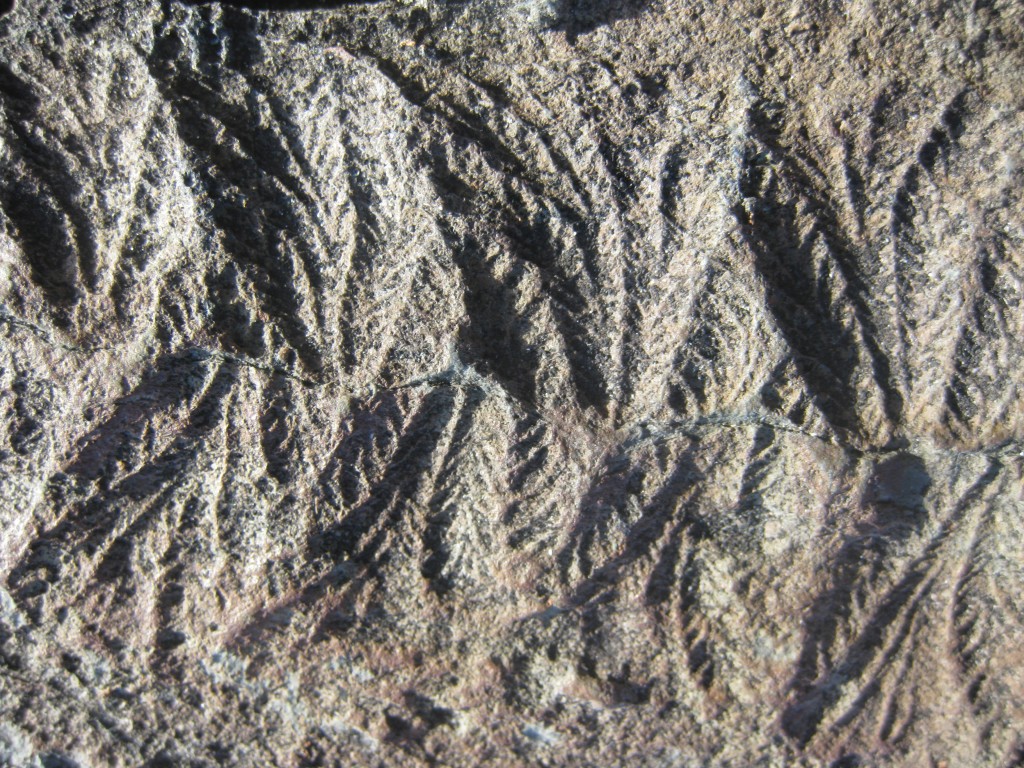
A close up photograph of a Fractofusus specimen from the ‘E’ surface, showing the many ‘self-similar’ branches that make up the organism. This type of branching, known as ‘rangeomorph’ branching, is unique to the late Ediacaran Period, and is currently unknown in any other living or fossil organism. Image credit: Emily Mitchell.
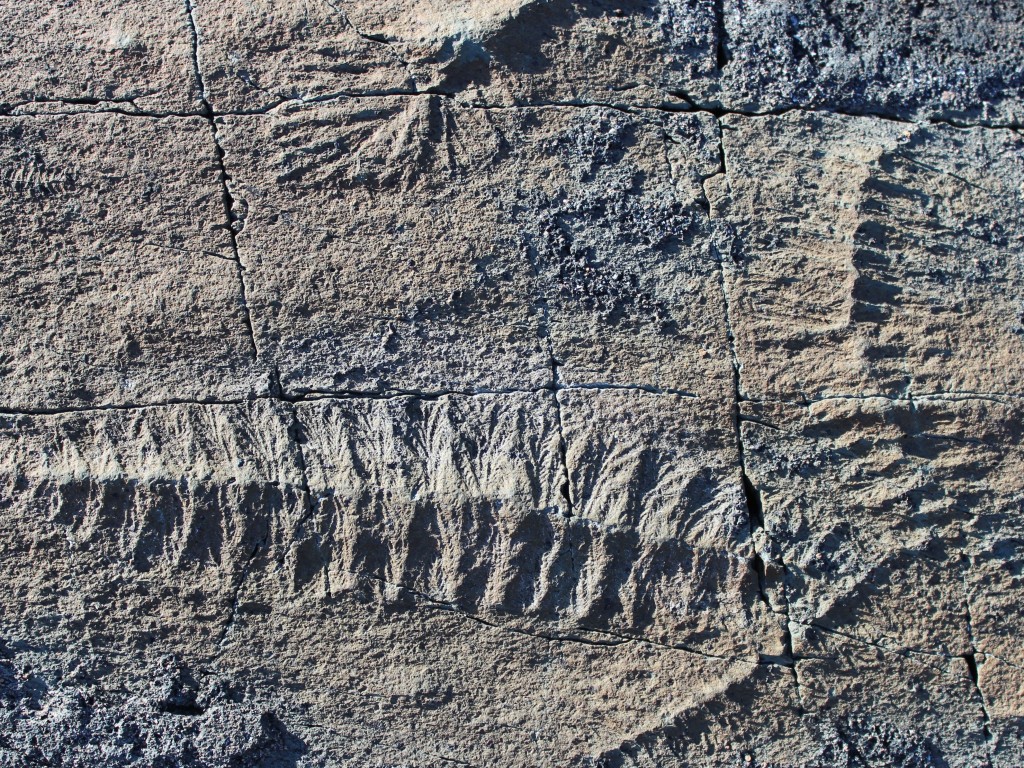
Interestingly, many Fractofusus specimens can be seen to group together. You may also be able to notice patches of the volcanic ash that smothered the organisms on the Ediacaran seafloor, preserving all members of the community in their original positions. This in situ preservation means that modern spatial analyses can be successfully used to learn more about their biology in life. Image credit: Alex Liu.
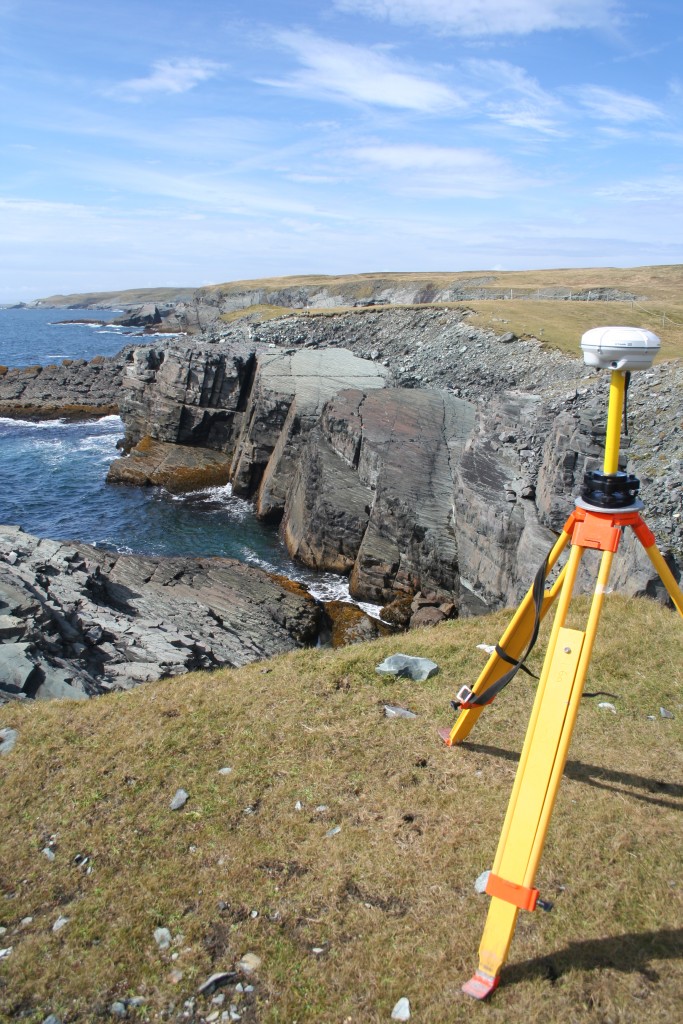
In order to measure the spatial distributions of Fractofusus specimens, GPS technology was employed. A GPS transmitter (attached to the tripod) allowed for measurements, accurate to just a few millimetres, to be made using a hand-held GPS receiver on the bedding planes. Image credit: Emily Mitchell.
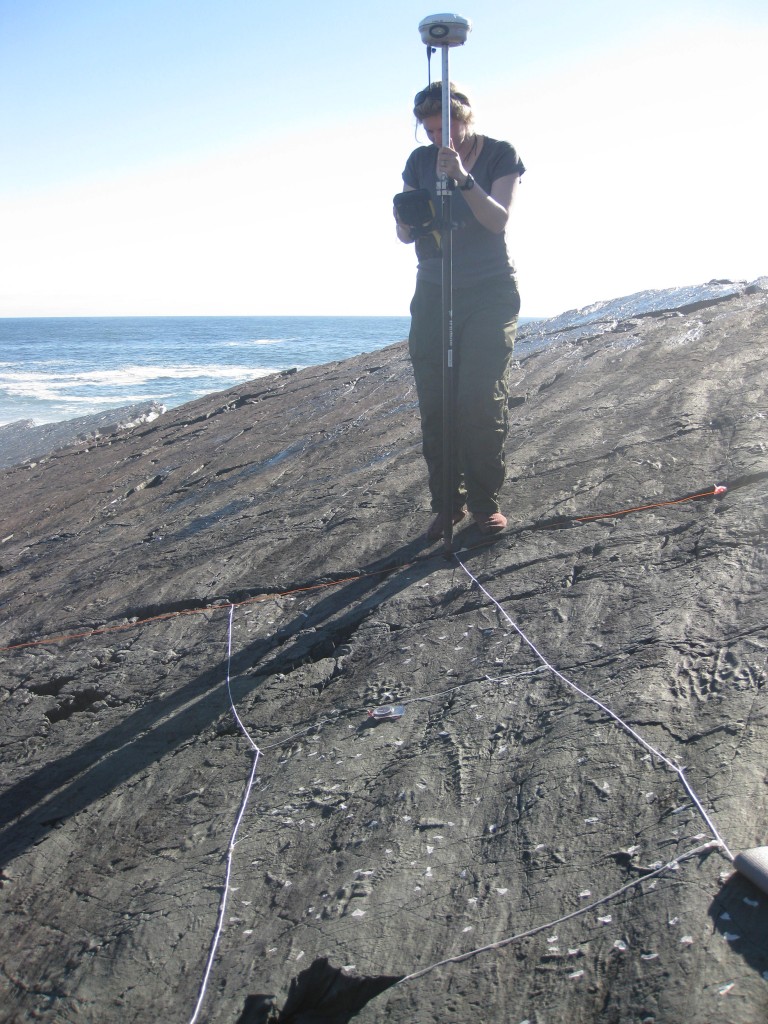
Dr Emily Mitchell mapping a section of the ‘E’ surface fossil community. The fossils were carefully identified (shown by the white pieces of paper), then a hand-held GPS receiver was placed on the centre point of each fossil, recording its position. The GPS receiver was kept vertical using a spirit level. Image credit Emily Mitchell.

The spatial information of the Fractofusus specimens was analysed to see if they did indeed cluster together. Slide credits: Emily Mitchell.

The data was also able to show that the smallest the Fractofusus specimens formed clusters of clusters, while the medium ones formed clusters. But conversely, the larger specimens were randomly distributed. These patterns were compared with known reproductive modes in modern organisms to deduce the most likely reproductive mode for Fractofusus.
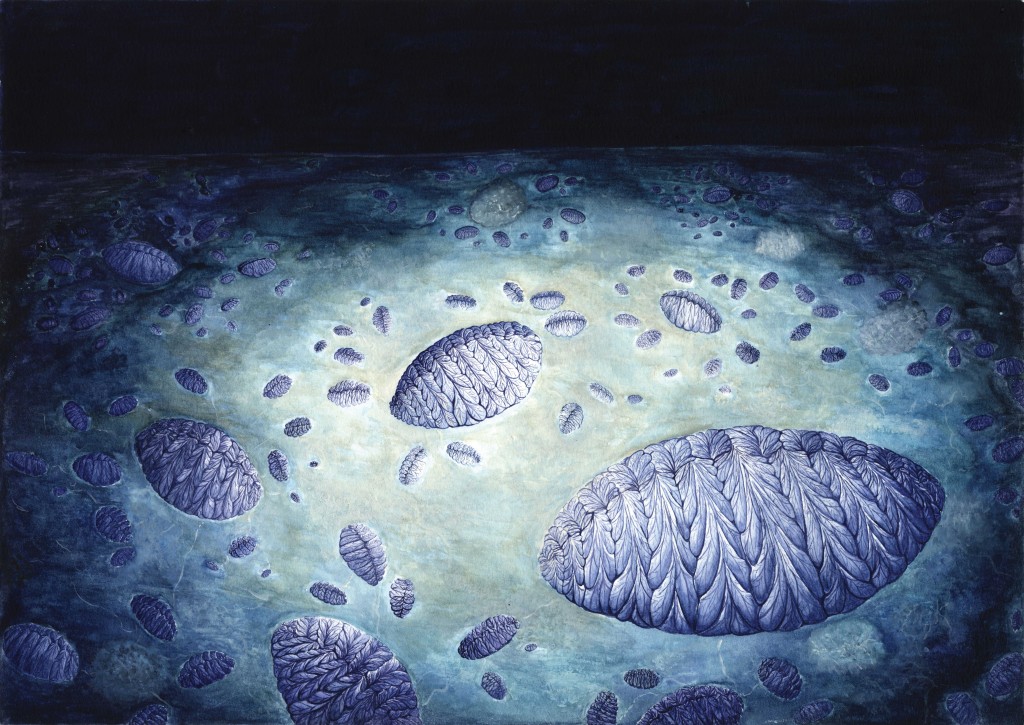
Artist’s reconstruction of the Fractofusus community on the H14 surface, portraying the clusters that appear to arise as a result of stolon-like reproduction (how strawberry or spider plants stem-off new individuals). Large individuals represent the primary colonisers of the seafloor. Their offspring cluster around them, and are themselves surrounded by their own offspring – the third generation on the surface. Stolon-like protrusions are faintly visible weaving in and out of the microbial mat that covers the seafloor. Lighting is artificial and as though from a submersible ROV. Image credit: Charlotte Kenchington.

